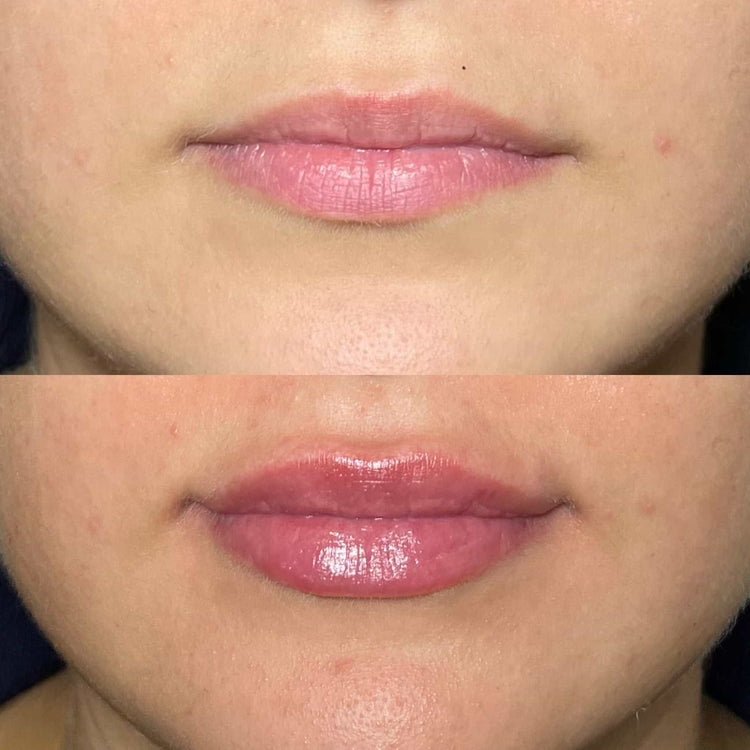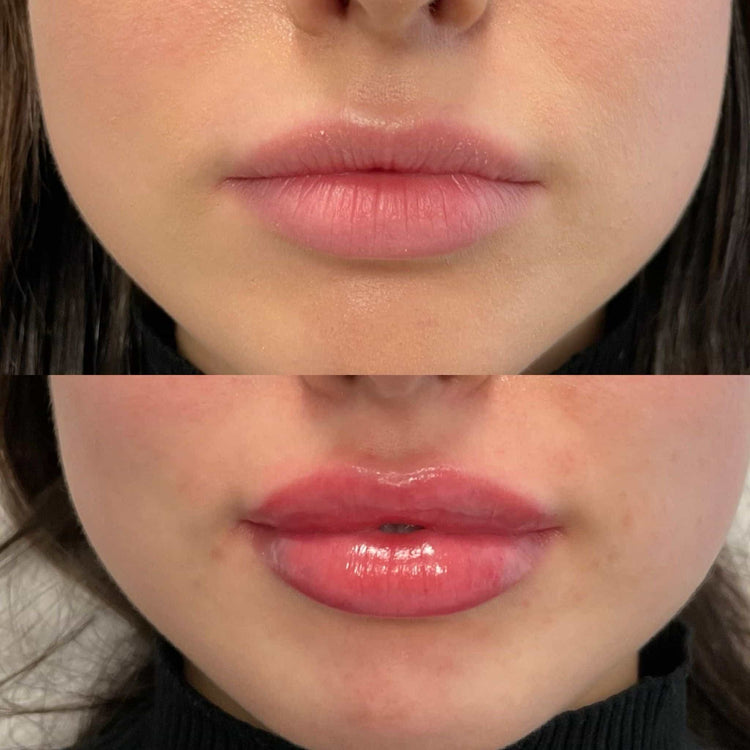Dermal Fillers for Facial Aesthetics
Dermal fillers have become increasingly popular in facial aesthetics for their ability to subtly rejuvenate the appearance. These injectables contain hyaluronic acid, a naturally occurring substance in the body that helps maintain skin hydration and volume. By strategically injecting fillers into specific areas, practitioners can address various concerns, including the prominent lines known as marionette lines and smile lines.
Targeting Marionette Lines
Marionette lines are vertical creases that extend from the corners of the mouth down towards the jawline, often appearing with age due to loss of facial fat and collagen. These lines can make the face look tired or sad. Dermal fillers can effectively address marionette lines by plumping up the tissues beneath the skin, smoothing out the creases and restoring a more youthful appearance.
Fillers are injected directly into the area around the corners of the mouth, strategically filling in the hollows and lifting the corners upwards. This creates a smoother transition between the cheek and jawline, minimizing the appearance of the marionette lines.

What are Marionette Lines?
Marionette lines are vertical creases that extend from the corners of the mouth down towards the jawline, often appearing with age due to loss of facial fat and collagen. These lines can make the face look tired or sad. Dermal fillers can effectively address marionette lines by plumping up the tissues beneath the skin, smoothing out the creases and restoring a more youthful appearance.
Fillers are injected directly into the area around the corners of the mouth, strategically filling in the hollows and lifting the corners upwards. This creates a smoother transition between the cheek and jawline, minimizing the appearance of the marionette lines.
How Dermal Fillers Work on Marionette Lines
Marionette lines are vertical creases that extend from the corners of the mouth down towards the jawline, often appearing with age due to loss of facial fat and collagen. These lines can make the face look tired or sad.
Dermal fillers can effectively address marionette lines by plumping up the tissues beneath the skin, smoothing out the creases and restoring a more youthful appearance. Fillers are injected directly into the area around the corners of the mouth, strategically filling in the hollows and lifting the corners upwards.
This creates a smoother transition between the cheek and jawline, minimizing the appearance of the marionette lines.
Types of Fillers Suitable for Marionette Lines
Marionette lines are vertical creases that extend from the corners of the mouth down towards the jawline. These lines often appear with age due to a loss of facial fat and collagen.
Dermal fillers can effectively address marionette lines by plumping up the tissues beneath the skin, smoothing out the creases and restoring a more youthful appearance.
Fillers suitable for treating marionette lines include hyaluronic acid-based fillers such as Juvederm Voluma, Restylane Lyft, and Belotero Balance.
These fillers are designed to provide volume and lift, smoothing out the lines and restoring facial contours.
Procedure and Recovery
Smile lines, also known as nasolabial folds, are creases that run from the sides of the nose to the corners of the mouth. They are a natural part of facial aging, caused by a decrease in collagen and fat volume over time.
Dermal fillers can effectively address smile lines by replenishing lost volume and smoothing out the creases. Hyaluronic acid-based fillers are commonly used for this purpose. These fillers attract and retain water, plumping up the skin and reducing the appearance of lines.
During the procedure, a qualified practitioner injects the filler strategically along the smile lines, lifting the corners of the mouth and restoring a more youthful contour.
The recovery period after dermal filler treatment for smile lines is typically minimal. Some mild redness, swelling, or bruising may occur at the injection site but usually subsides within a few days.
Patients can generally return to their normal activities immediately after the procedure. It’s important to avoid strenuous activity and massage the treated area for several days.
The results of dermal filler treatment for smile lines typically last between six months to two years, depending on the type of filler used, individual metabolism, and lifestyle factors.
Maintenance treatments are often recommended to sustain the desired results.
Addressing Smile Lines
Dermal fillers have become increasingly popular in facial aesthetics for their ability to subtly rejuvenate the appearance. These injectables contain hyaluronic acid, a naturally occurring substance in the body that helps maintain skin hydration and volume. By strategically injecting fillers into specific areas, practitioners can address various concerns, including the prominent lines known as marionette lines and smile lines.

- Marionette lines are vertical creases that extend from the corners of the mouth down towards the jawline, often appearing with age due to loss of facial fat and collagen. These lines can make the face look tired or sad. Dermal fillers can effectively address marionette lines by plumping up the tissues beneath the skin, smoothing out the creases and restoring a more youthful appearance.
- Fillers are injected directly into the area around the corners of the mouth, strategically filling in the hollows and lifting the corners upwards. This creates a smoother transition between the cheek and jawline, minimizing the appearance of the marionette lines.
Smile lines, also known as nasolabial folds, are creases that run from the sides of the nose to the corners of the mouth. They are a natural part of facial aging, caused by a decrease in collagen and fat volume over time. Dermal fillers can effectively address smile lines by replenishing lost volume and smoothing out the creases. Hyaluronic acid-based fillers are commonly used for this purpose. These fillers attract and retain water, plumping up the skin and reducing the appearance of lines.
During the procedure, a qualified practitioner injects the filler strategically along the smile lines, lifting the corners of the mouth and restoring a more youthful contour.
Understanding Smile Lines
Dermal fillers have become increasingly popular in facial aesthetics for their ability to subtly rejuvenate the appearance. These injectables contain hyaluronic acid, a naturally occurring substance in the body that helps maintain skin hydration and volume. By strategically injecting fillers into specific areas, practitioners can address various concerns, including the prominent lines known as marionette lines and smile lines.
Marionette lines are vertical creases that extend from the corners of the mouth down towards the jawline, often appearing with age due to loss of facial fat and collagen. These lines can make the face look tired or sad. Dermal fillers can effectively address marionette lines by plumping up the tissues beneath the skin, smoothing out the creases and restoring a more youthful appearance.
Fillers are injected directly into the area around the corners of the mouth, strategically filling in the hollows and lifting the corners upwards. This creates a smoother transition between the cheek and jawline, minimizing the appearance of the marionette lines.
Smile lines, also known as nasolabial folds, are creases that run from the sides of the nose to the corners of the mouth. They are a natural part of facial aging, caused by a decrease in collagen and fat volume over time. Dermal fillers can effectively address smile lines by replenishing lost volume and smoothing out the creases. Hyaluronic acid-based fillers are commonly used for this purpose. These fillers attract and retain water, plumping up the skin and reducing the appearance of lines.
During the procedure, a qualified practitioner injects the filler strategically along the smile lines, lifting the corners of the mouth and restoring a more youthful contour.
Dermal Filler Application for Smile Lines
Dermal fillers have become increasingly popular in facial aesthetics for their ability to subtly rejuvenate the appearance. These injectables contain hyaluronic acid, a naturally occurring substance in the body that helps maintain skin hydration and volume. By strategically injecting fillers into specific areas, practitioners can address various concerns, including the prominent lines known as marionette lines and smile lines.
Marionette lines are vertical creases that extend from the corners of the mouth down towards the jawline, often appearing with age due to loss of facial fat and collagen. These lines can make the face look tired or sad. Dermal fillers can effectively address marionette lines by plumping up the tissues beneath the skin, smoothing out the creases and restoring a more youthful appearance.
Fillers are injected directly into the area around the corners of the mouth, strategically filling in the hollows and lifting the corners upwards. This creates a smoother transition between the cheek and jawline, minimizing the appearance of the marionette lines.
Smile lines, also known as nasolabial folds, are creases that run from the sides of the nose to the corners of the mouth. They are a natural part of facial aging, caused by a decrease in collagen and fat volume over time. Dermal fillers can effectively address smile lines by replenishing lost volume and smoothing out the creases. Hyaluronic acid-based fillers are commonly used for this purpose. These fillers attract and retain water, plumping up the skin and reducing the appearance of lines.
During the procedure, a qualified practitioner injects the filler strategically along the smile lines, lifting the corners of the mouth and restoring a more youthful contour.
Expected Results and Longevity
Dermal fillers have become increasingly popular in facial aesthetics for their ability to subtly rejuvenate the appearance. These injectables contain hyaluronic acid, a naturally occurring substance in the body that helps maintain skin hydration and volume. By strategically injecting fillers into specific areas, practitioners can address various concerns, including marionette lines and smile lines.
Marionette lines are vertical creases that extend from the corners of the mouth down towards the jawline, often appearing with age due to loss of facial fat and collagen. These lines can make the face look tired or sad. Dermal fillers can effectively address marionette lines by plumping up the tissues beneath the skin, smoothing out the creases and restoring a more youthful appearance.
Fillers are injected directly into the area around the corners of the mouth, strategically filling in the hollows and lifting the corners upwards. This creates a smoother transition between the cheek and jawline, minimizing the appearance of the marionette lines.
Smile lines, also known as nasolabial folds, are creases that run from the sides of the nose to the corners of the mouth. They are a natural part of facial aging, caused by a decrease in collagen and fat volume over time. Dermal fillers can effectively address smile lines by replenishing lost volume and smoothing out the creases.
Hyaluronic acid-based fillers are commonly used for this purpose. These fillers attract and retain water, plumping up the skin and reducing the appearance of lines. During the procedure, a qualified practitioner injects the filler strategically along the smile lines, lifting the corners of the mouth and restoring a more youthful contour.
The recovery period after dermal filler treatment for marionette lines and smile lines is typically minimal. Some mild redness, swelling, or bruising may occur at the injection site but usually subsides within a few days. Patients can generally return to their normal activities immediately after the procedure. It’s important to avoid strenuous activity and massage the treated area for several days.

The results of dermal filler treatment for marionette lines and smile lines typically last between six months to two years, depending on the type of filler used, individual metabolism, and lifestyle factors. Maintenance treatments are often recommended to sustain the desired results.
Choosing the Right Type of Filler for Smile Lines
When choosing a dermal filler for addressing smile lines, several factors come into play. Hyaluronic acid-based fillers are generally preferred due to their ability to attract and retain moisture, effectively plumping up the skin and smoothing out wrinkles.
Different hyaluronic acid fillers have varying consistencies and densities. For smile lines, a filler with moderate viscosity is often chosen. This allows it to be injected smoothly along the creases while providing adequate lift and volume to minimize their appearance.
Considerations Before Treatment
Before undergoing any dermal filler treatment, it’s crucial to consider several factors. These include understanding your desired outcome, discussing potential risks and benefits with a qualified practitioner, and evaluating your overall health and medical history.
Consultation with a Qualified Professional
Before embarking on any cosmetic procedure, including dermal filler treatments for marionette lines or smile lines, thorough consultation with a qualified professional is essential.
This allows for a comprehensive assessment of your individual needs, goals, and medical suitability.
A qualified practitioner will examine your facial structure, discuss your desired aesthetic outcome, and evaluate any potential contraindications or risks associated with the procedure. They will also provide you with detailed information about the different types of fillers available, their expected results, potential side effects, and the recovery process.
Open communication with your practitioner is crucial to ensure that you make an informed decision and achieve the desired outcome.
Individual Assessment and Treatment Planning
Considerations before treatment are vital for a successful and safe dermal filler experience.
First, understand your goals. What specific concerns do you want to address – marionette lines, smile lines, or both? Clearly communicating your desires with your practitioner will ensure they can develop a tailored treatment plan.
Second, assess your health history and any medications you are taking. Certain medical conditions and medications may preclude you from receiving dermal fillers. A thorough discussion with your practitioner about your medical background is essential.
Finally, be realistic about your expectations. Dermal fillers offer subtle improvements rather than dramatic transformations. Understanding this can help manage your expectations and lead to a more satisfying experience.
Individual assessment involves a comprehensive evaluation of your facial structure, skin type, and desired outcome. The practitioner will examine your existing wrinkles, muscle movements, and overall facial symmetry to determine the best placement for injections and the appropriate volume of filler needed. This personalized approach ensures that the treatment is customized to your unique needs and goals.
Treatment planning follows the assessment and involves a detailed discussion with the practitioner. They will explain the type of fillers they recommend based on your individual needs, outlining the procedure itself, potential risks and side effects, and the expected duration of results. This collaborative approach ensures that you are fully informed and comfortable moving forward with the treatment.
Realistic Expectations and Potential Risks
Before undergoing dermal filler treatment, it’s essential to carefully consider several factors to ensure a successful and safe experience.
First, have realistic expectations about what fillers can achieve. Dermal fillers are designed to subtly enhance your appearance, reducing the appearance of wrinkles and adding volume, but they won’t completely erase all signs of aging or provide a drastic makeover.
Next, thoroughly discuss your goals and concerns with a qualified practitioner. Be specific about the areas you want to address (marionette lines, smile lines, or both) and describe the desired outcome. This open communication allows the practitioner to develop a personalized treatment plan tailored to your needs.
Finally, understand the potential risks and side effects associated with dermal fillers. While generally safe, these procedures can cause temporary side effects like redness, swelling, bruising, or discomfort at the injection site. In rare cases, more serious complications may occur, such as infection or allergic reactions. Your practitioner will discuss these risks in detail and ensure you understand them before proceeding.
Remember that choosing a qualified and experienced practitioner is crucial. Look for board-certified dermatologists or plastic surgeons who have expertise in dermal fillers. A skilled practitioner will use appropriate techniques and products to minimize the risk of complications and maximize your chances of achieving desirable results.
Enquire about dermal fillers to rejuvenate your skin at It’s Me & You Clinic with Dr. Laura Geige
- Redensity 1 Skin Booster Treatments Near Bourne, Surrey - May 14, 2025
- How To Safely Consume THC Beverages For A Relaxing Experience - May 12, 2025
- How Dermal Fillers Address Marionette Lines And Smile Lines - May 12, 2025


